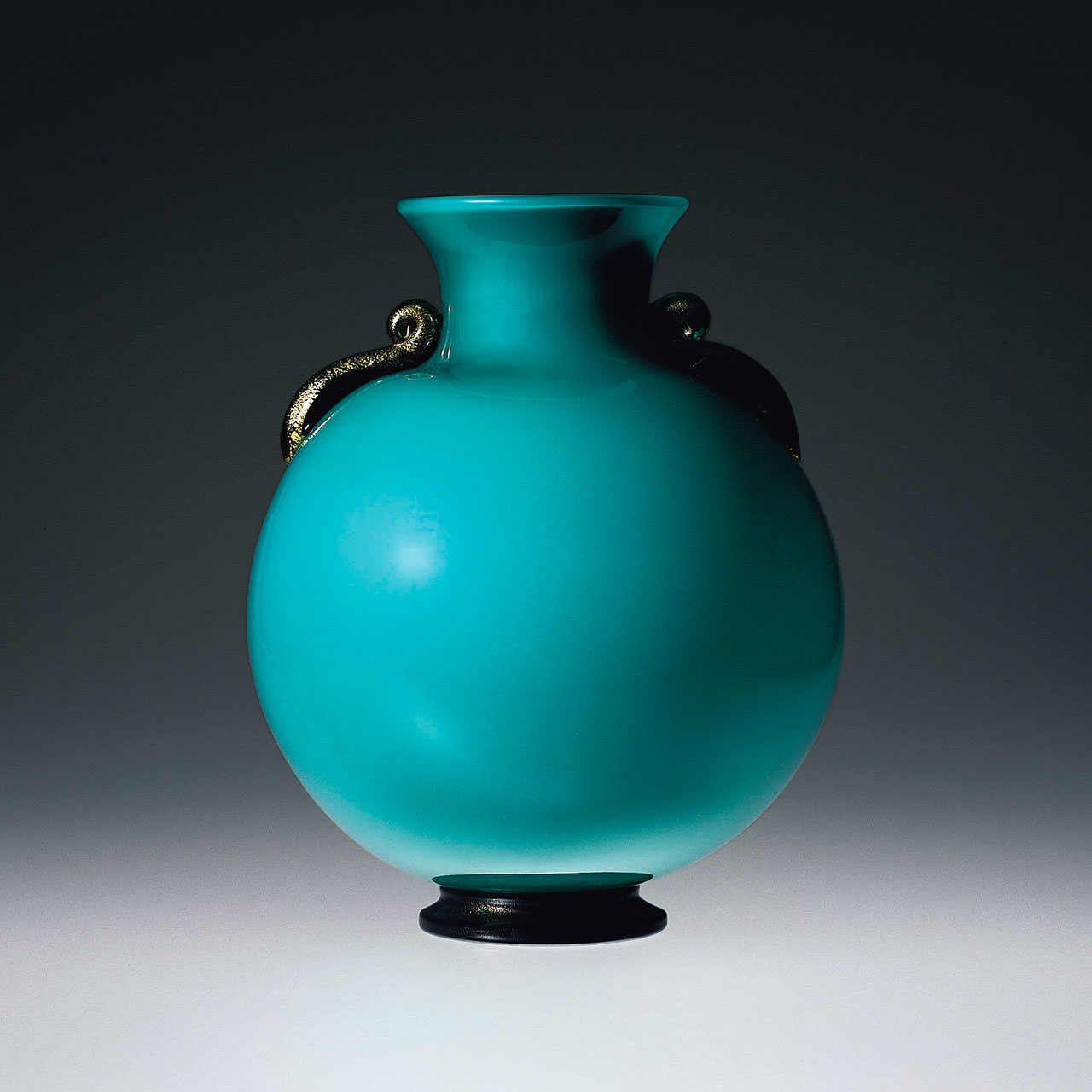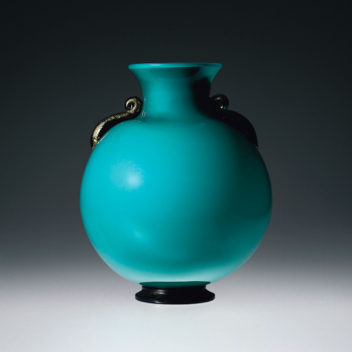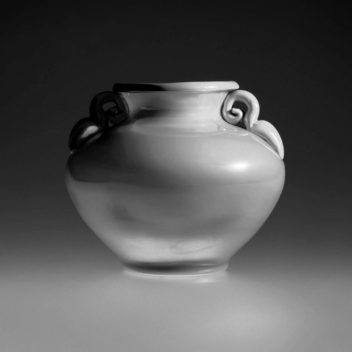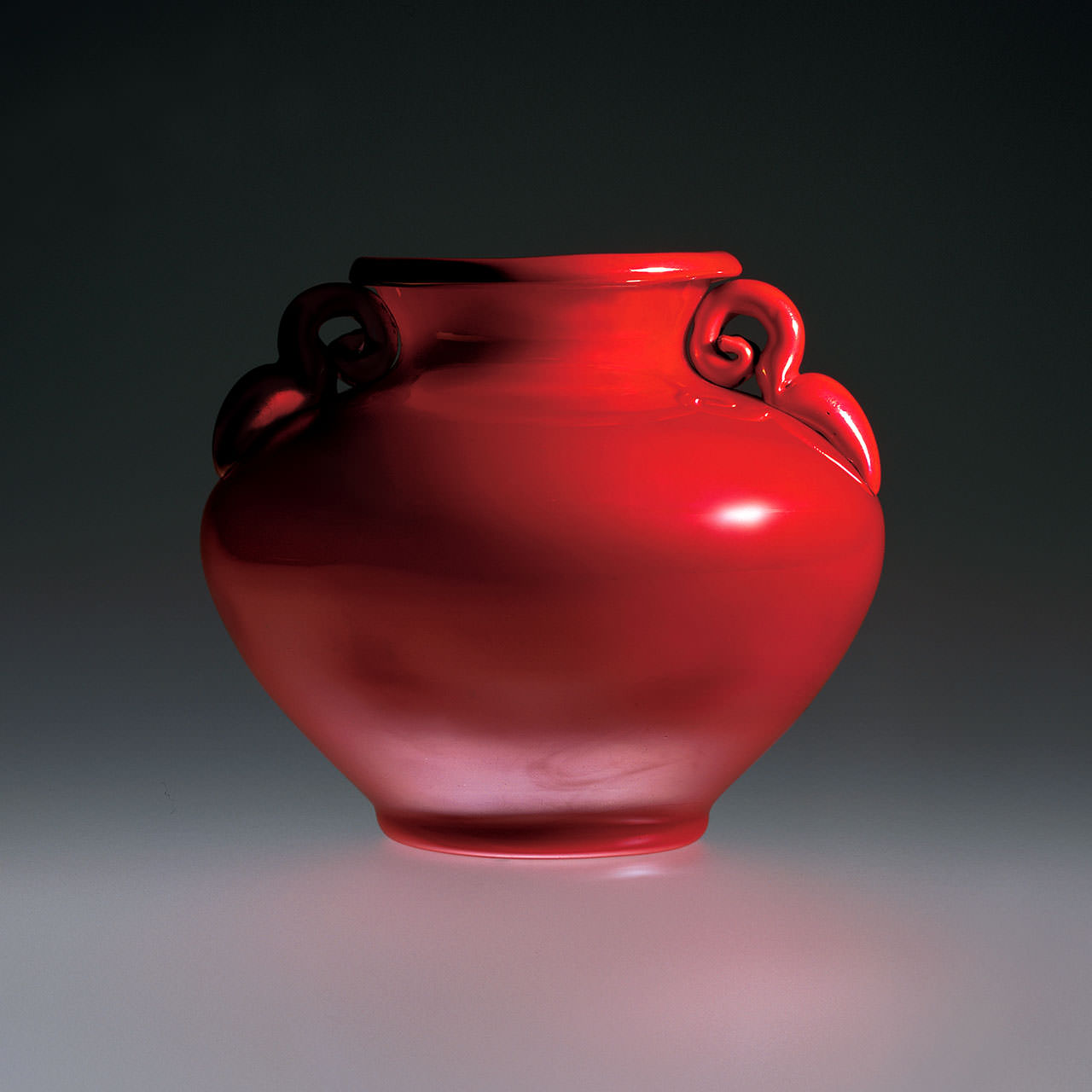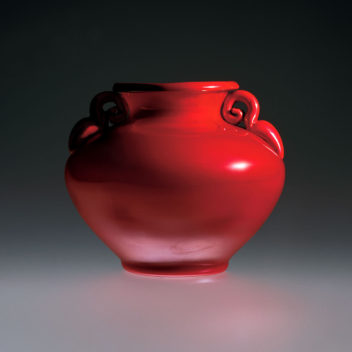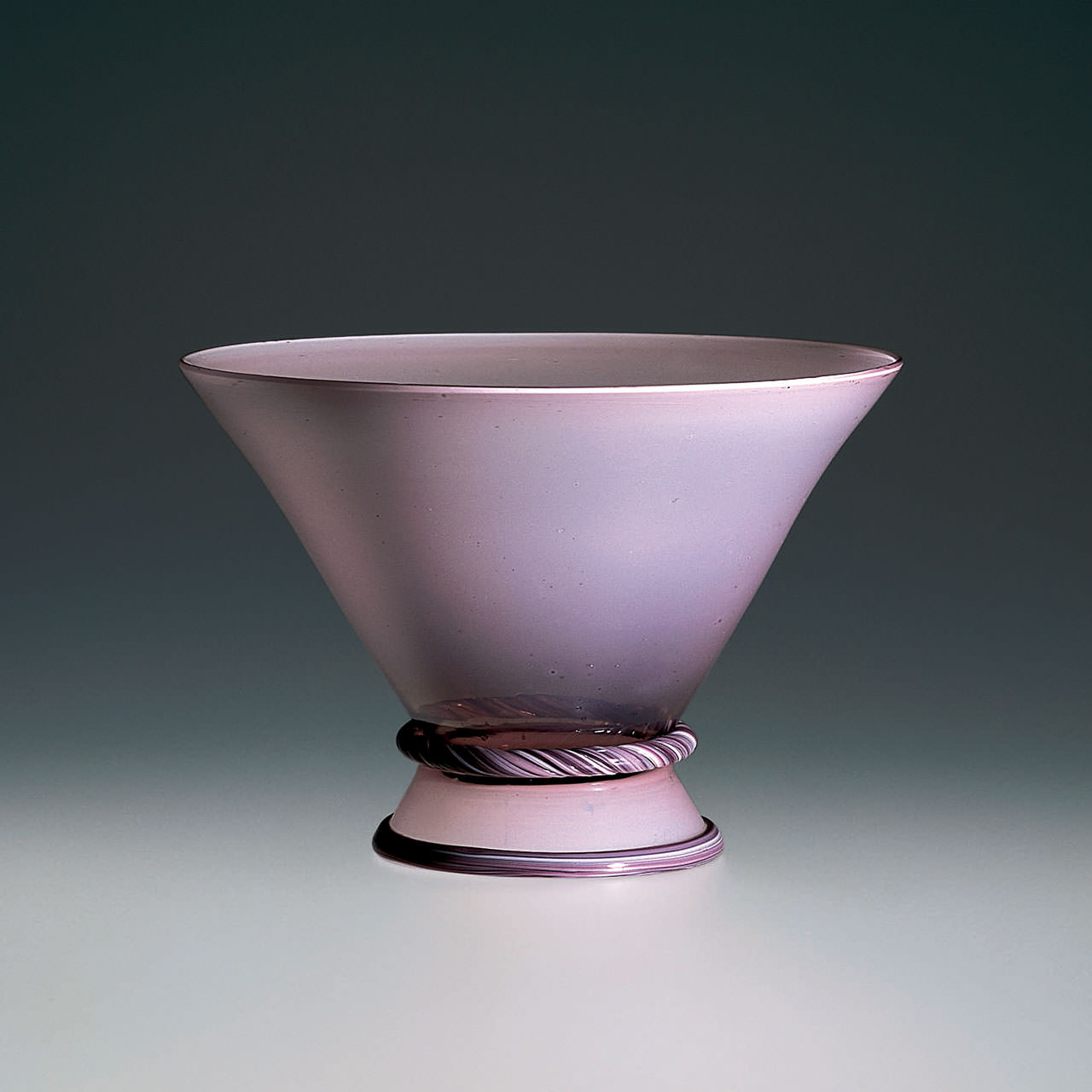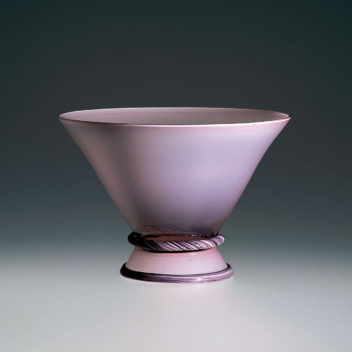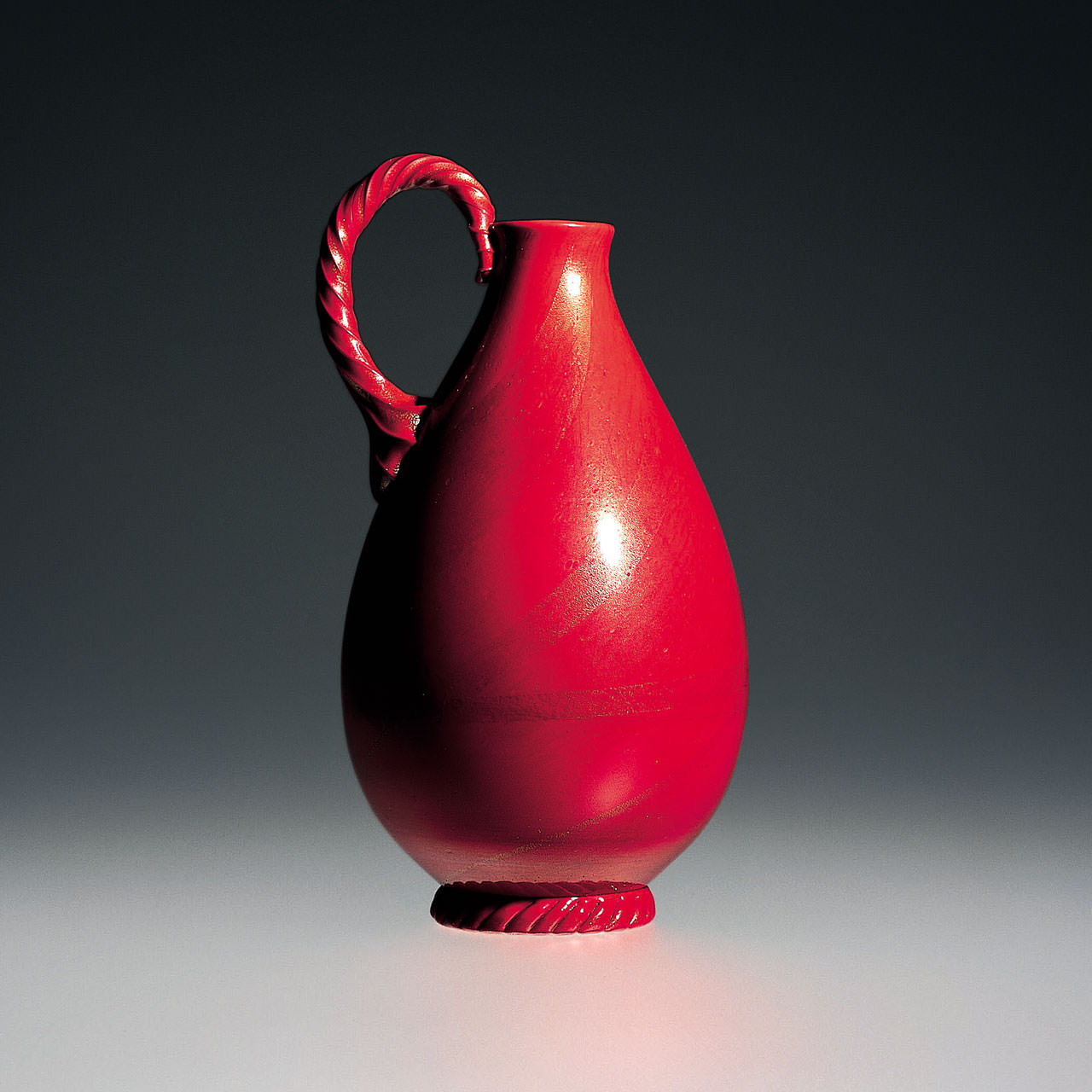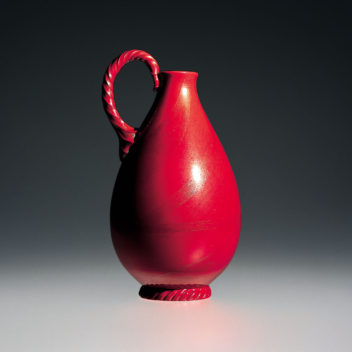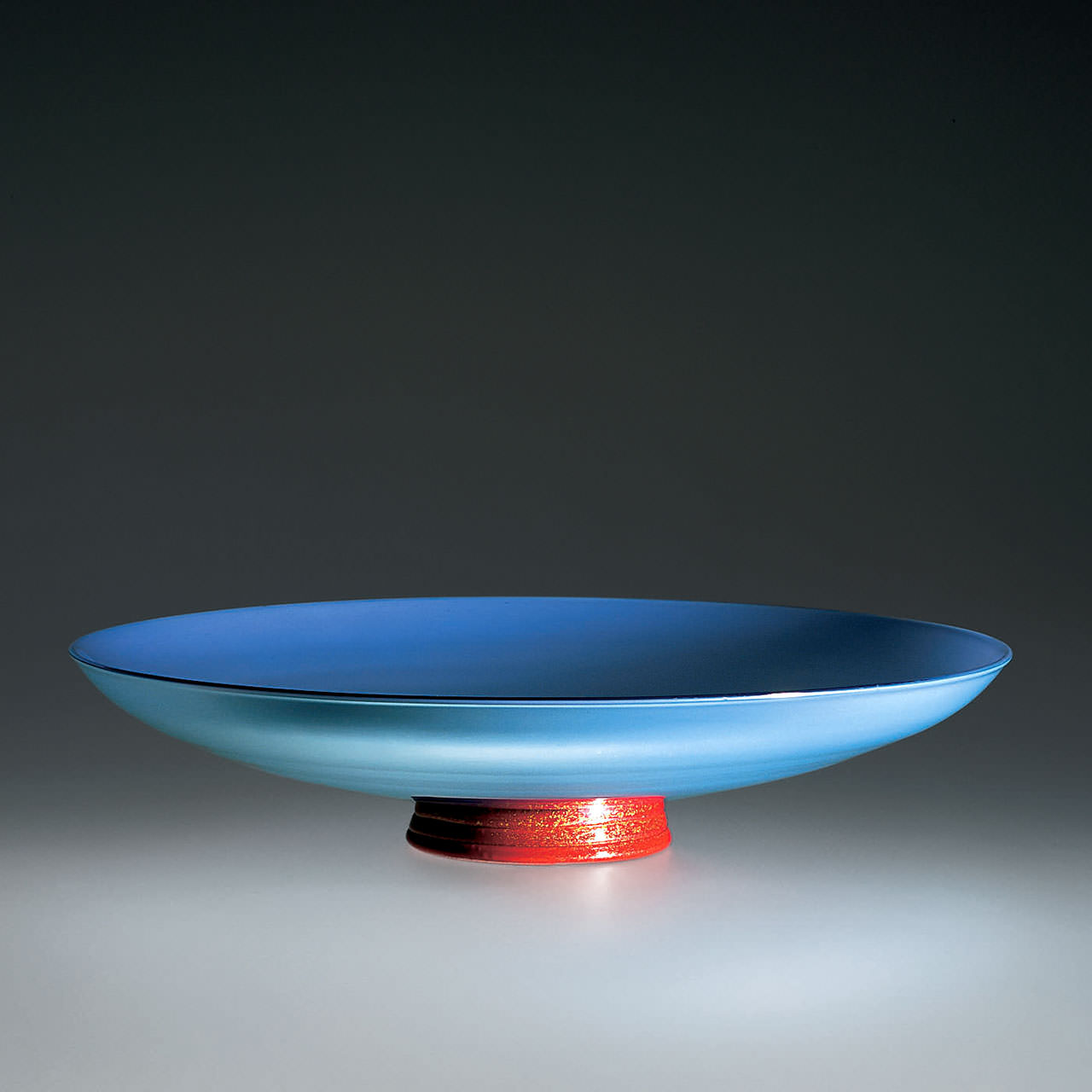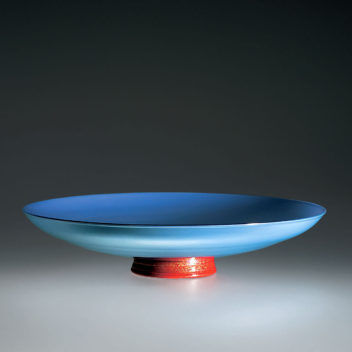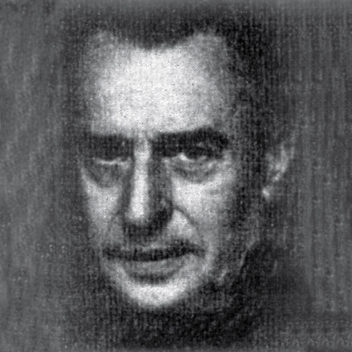
Napoleone Martinuzzi 1892–1977
The son of a glassworker from Murano, Napoleone Martinuzzi was a sculptor, designer, and businessman. He attended the Accademia di Belle Arti di Venezia, and later joined the secessionist group of Cà Pesaro, where he exhibited his sculptures in 1908. From 1917 on, he was Gabriele D’Annunzio’s favorite artist and he designed a funeral monument for him, as well as sculpture and many works in glass, which may still be seen today at the Vittoriale. Between 1921 and 1931, he directed the Museo Vetrario di Murano, and in 1925 he became a partner and artistic director at the Vetri Soffiati Muranesi Venini & C. After carrying on the concepts defined by his predecessor, Vittorio Zecchin, and creating beautifully transparent blown glass pieces, he elaborated on his own distinct style, directly derived from his experience as a Novecento sculptor. In 1928, he made his first pieces in pulegoso glass, giving life to a sculptural series of vessels with impressive shapes and vivid colors, as well as an unusual collection of cacti, fruits, and animals. After leaving Venini, in 1932 he founded Zecchin-Martinuzzi Vetri Artistici e Mosaici with Francesco Zecchin, for which he designed figures of animals and cacti, opaque vessels with classical shapes, and female nudes in solid massiccio glass. He became artistic director of Alberto Seguso’s Arte Vetro, where he made glass sculptures shaped while hot. Between 1953 and 1958, he designed chandeliers and glass tiles for the Vetreria Cenedese. In the ’60s and ’70s, he designed works produced by Alfredo Barbini for Pauly & C.
